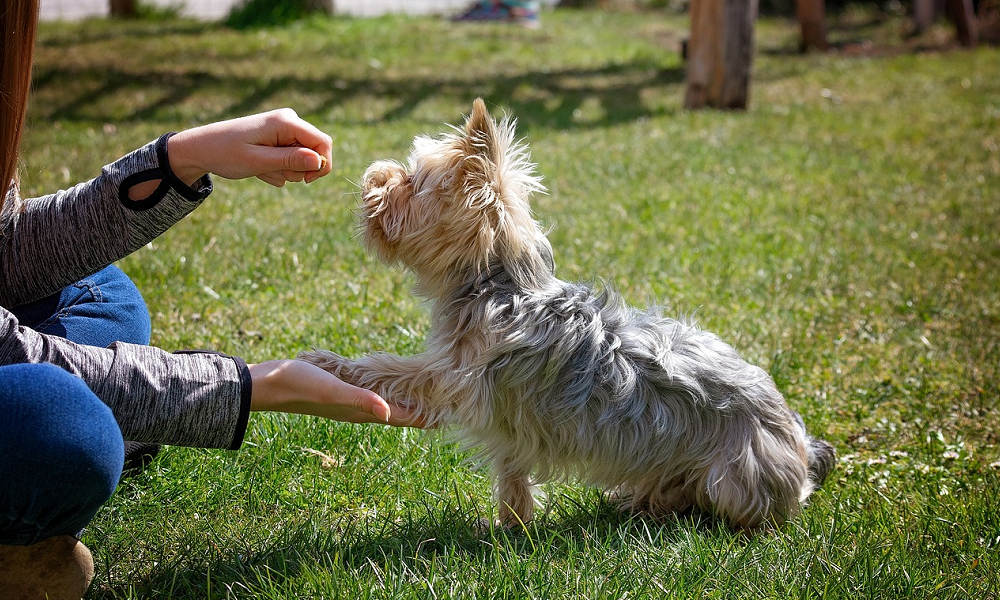Reviews
Why Consistency Is Key in Dog Training

Dog training is essential for nurturing a well-behaved and happy canine companion. While many methods and tools are available, one principle remains constant and indispensable: consistency.
Whether you’re teaching your dog basic commands, addressing behavioral issues, or building a strong bond, consistency is the thread that ties effective training together. Here’s why it’s crucial and how to implement it in your dog training routine.
Dogs Thrive on Routine
Dogs are creatures of habit. They rely on patterns to make sense of the world around them. Consistency in training helps create a predictable environment where your dog knows what to expect. For example, using the same word or gesture for a command—such as “sit” with a downward hand motion—helps your dog associate the cue with the desired behavior.
Inconsistent commands or routines can confuse your dog, making it harder for them to learn. If one day you allow jumping on the couch and the next you scold them for it, they’ll struggle to understand the rules.
Reinforces Positive Behaviors
Positive reinforcement is a cornerstone of modern dog training. However, for it to work effectively, it must be applied consistently. Rewarding good behavior every time it occurs—especially during the initial training phases—ensures your dog understands desirable actions.
For example, if you’re teaching your dog to come when called, rewarding them every time they obey strengthens the association between the command and the reward. Skipping rewards intermittently can weaken this connection, slowing progress.
Avoids Reinforcing Unwanted Behaviors
Inconsistency can inadvertently reinforce negative behaviors. For instance, if your dog begs at the dinner table and you occasionally give them scraps, they’ll continue the behavior, hoping for that one-off reward. Consistently ignoring begging behavior will help them understand that it’s not rewarding and will lead to its eventual extinction.
Establishes Clear Communication
Consistency is key to clear communication between you and your dog. Dogs don’t understand language like humans; they rely on tone, gestures, and patterns. If you vary your tone of voice or change your commands frequently, your dog may not grasp what you want them to do.
Using the same words, gestures, and tone across all training sessions helps your dog decode your intentions faster, making learning smoother.
Builds Trust and Strengthens the Bond
When your dog knows what to expect from you, it builds trust. They’ll feel secure in their relationship with you, knowing the rules are steady and fair. This trust enhances your bond and creates a positive dynamic, making training sessions enjoyable.
How to Stay Consistent in Training
- Set Clear Rules: Decide in advance what behaviors are acceptable and unacceptable in your home. Ensure all family members adhere to the same rules.
- Use the Same Commands: Stick to one word or phrase for each command. Avoid synonyms or variations.
- Reward Immediately: Timing is crucial. To reinforce the connection, reward your dog immediately after they perform the desired behavior.
- Practice Regularly: Consistency requires repetition. Short, frequent training sessions work better than sporadic, long sessions.
- Be Patient: Dogs learn at different rates. Consistency doesn’t mean instant results, but it ensures steady progress over time.
Conclusion
Consistency in dog training isn’t just important—it’s transformative. It provides the foundation for clear communication, fosters trust, and accelerates learning. By maintaining steady routines, commands, and expectations, you’ll help your dog understand what you want and build a rewarding relationship that lasts a lifetime. So, stay consistent, and watch your dog thrive!

-

 Legal6 days ago
Legal6 days agoMichigan man JD Vance sentenced to 2 years for threatening Trump and JD Vance
-

 Politics1 week ago
Politics1 week agoU.S. to designate Maduro-linked Cartel de los Soles as terrorist organization
-

 Health7 days ago
Health7 days agoCambodia reports fatal H5N1 bird flu case in 22-year-old man
-

 World4 days ago
World4 days agoHurricane Melissa registered 252 mph wind gust, breaking global record
-

 Legal4 days ago
Legal4 days agoWoman in critical condition after being set on fire on Chicago train
-

 Politics7 days ago
Politics7 days agoEpstein survivors release PSA calling on Congress to release all files
-

 Legal4 days ago
Legal4 days ago1 dead, 2 injured in shooting at Dallas Walmart parking lot
-

 Legal3 days ago
Legal3 days agoSuspect in San Diego stabbing shot by authorities after fleeing into Mexico




